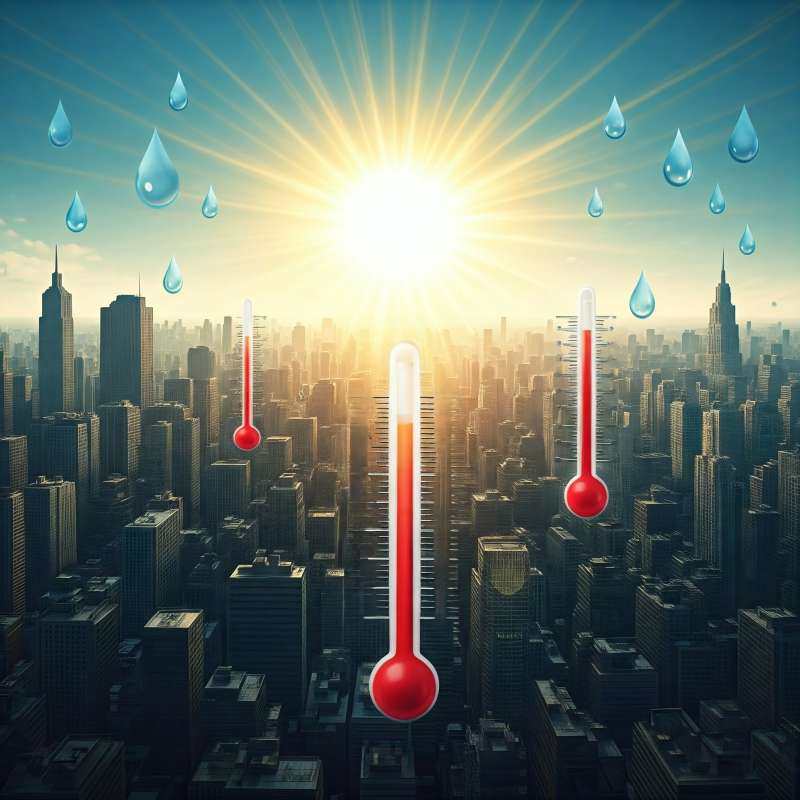Water Scarcity Threatens Mexican Cities as Climate Change Intensifies
Mexico's cities face a growing water crisis due to population growth, climate change, and aging infrastructure. A UNAM study reveals unequal access and increased consumption during hot periods, exacerbated by urban heat islands.

Mexico City, Guadalajara, and Monterrey, Mexico’s largest metropolitan areas, are grappling with an increasingly precarious water supply, a new study from the National Autonomous University of Mexico’s (UNAM) Institute of Geography (IGg) reveals. The research, published in the journal Investigaciones Geográficas, highlights the complex interplay of population growth, economic disparities, aging infrastructure, and increasingly volatile climate patterns that are straining the country’s ability to provide sufficient drinking water to its urban centers.
The study, titled "The Changing Climate and Domestic Water Consumption in Cities of Mexico," underscores the uneven distribution of water resources within these metropolises. Lead researcher Víctor Orlando Magaña Rueda, along with colleagues Carlos Joel Ábrego Góngora of the Autonomous University of Nuevo León and Baldemar Méndez Antonio of the Water Commission of the State of Mexico, found that while population growth drives demand, access remains unequal. Furthermore, climate variations, particularly rising temperatures, significantly influence consumption patterns.
“We wanted to understand the impact of global warming on water consumption,” Mr. Magaña Rueda explained in an interview. “The concern is not just about increased individual consumption due to hotter weather, but the compounding effect of a growing population placing unprecedented strain on existing resources.”
Quantifying precise consumption levels remains a challenge, according to Mr. Magaña Rueda, due to limited data availability. However, the study estimates a 10% to 15% increase in water usage during periods of elevated temperatures. This spike in demand, coupled with the inherent uncertainties of a changing climate, underscores the urgency of implementing more effective water management strategies.
The agricultural sector, often criticized for inefficient water practices, is a key area for reform, the study argues. Mr. Magaña Rueda emphasized the need for improved planning, a coordinated national strategy, and a widespread cultural shift towards water conservation. "We need a water culture that permeates all levels of society," he stressed, "a recognition that as the number of users increases, our collective vulnerability to water scarcity intensifies."
The study also recommends readily adoptable household solutions. Mr. Magaña Rueda suggests implementing affordable technologies, such as water-saving showerheads and low-flow fixtures for toilets and sinks, as practical steps individuals can take to reduce consumption.
The research further reveals the significant influence of climate on urban water demand. Maximum temperatures emerge as a key modulator, with consumption peaking during the hottest periods of the year, typically preceding the summer rains. This pattern, coupled with the urban heat island effect, where cities experience higher temperatures than surrounding areas, suggests a potential for even greater demand increases in the future.
Paradoxically, the study notes a per capita decrease in water consumption across major Mexican cities in recent decades. This decline, however, is not attributed to conservation efforts but rather to a supply failing to keep pace with population growth, a troubling indicator of looming shortages.
Meteorological drought, a critical driver of water scarcity, emerges as the most impactful climate factor. These dry periods often lead to reduced water availability and trigger socioeconomic drought, with far-reaching consequences for communities and businesses.
Ultimately, the study concludes that effective urban water management must incorporate climate data and prioritize the supply to cities. Without a concerted effort to address these challenges, Mexico’s major metropolitan areas face the prospect of increasingly severe water stress, threatening economic growth and the well-being of millions of residents.




